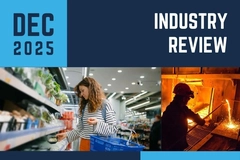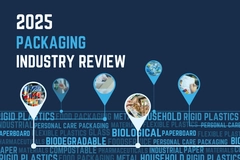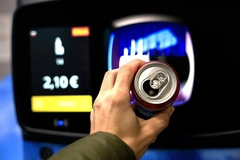Huhtamaki president: Achieving recyclability amid food waste and hygiene concerns
Food packaging technology can help minimize waste by extending product shelf life. However, consistent sustainability regulations must be accompanied by assessments on their potential economic, environmental, and social impacts, according to Fredrik Davidsson, president, Fiber Foodservice E-A-O, at Huhtamaki.
Davidsson highlights food waste as a prominent global issue amid climate change concerns. To reduce waste, packaging providers such as Huhtamaki are increasingly transitioning toward recycled material inclusion and sustainable technologies. But Davidsson asserts that despite the need for circular design, there should never be a compromise on the safety, quality, or structure of food packaging.
Packaging Insights speaks to Davidsson about Huhtamaki’s latest developments in food packaging and how the packaging giant innovates to meet the demands for food safety and hygiene standards, and global food waste concerns.
What current trends do you see in the food packaging industry?
Davidsson: The global packaging industry is shifting significantly thanks to changing consumer expectations, including a greater focus on sustainable alternatives and innovation. Customers and consumers demand more sustainable alternatives and materials, which means increasing demand for packaging options that are recyclable or home compostable.
B2B customers are increasingly choosing suppliers who can help them reach their sustainability targets. Many of our customers in FMCG, retail, and quick-service restaurants (QSR) have set specific targets on these topics, and more sustainable packaging solutions play an essential role in achieving those targets. We can do this, for example, by offering products with recycled material content, improved recyclability, or lower emissions over the life cycle. Huhtamaki’s ProDairy is a single-coated paper cup for dairy that reduces plastic content to below 10%.
Huhtamaki’s ProDairy is a single-coated paper cup for dairy that reduces plastic content to below 10%.
What are the challenges in creating recyclable food packaging?
Davidsson: In the foodservice industry — whether FMCG, retail, or QSR — we must meet stringent food safety and hygiene standards. Developing innovative and recyclable products that replace fully plastic packaging is not easy.
One particular challenge that has personally concerned me has been how to reduce the use of plastic and create recyclable packaging for perishable dairy products while maintaining the high-performance standards required for dairy products.
We recently launched a recyclable single-coated paper cup for yogurt and dairy. ProDairy reduces plastic content to below 10% while maintaining high-performance standards and is recyclable.
How do you expect the food packaging industry to evolve over the next five years?
Davidsson: Food packaging offers significant benefits for society and the planet by increasing food safety, accessibility, affordability, and reducing food waste. Packaging also plays a role in preventing food waste, which is a serious issue that needs to be tackled. Globally, almost 30% of food produced is lost or wasted, contributing to approximately 10% of total greenhouse gas emissions.
Our focus is on improving packaging through the optimization of material use, the development of recyclable options, and the creation of fit-for-purpose packaging. The transition to more sustainable alternatives continues, and it must continue. It is also linked to global legislative changes and policy debates in many markets.  Huhtamaki’s fiber lids are made from renewable fibers and contain no plastic coatings.
Huhtamaki’s fiber lids are made from renewable fibers and contain no plastic coatings.
We support policies designed to ensure the materials used in packaging are recycled and generate additional value within the wider economy. Every legislative initiative must be accompanied by a top-quality, comprehensive impact assessment and life cycle analysis examining the potential economic, environmental, and social impacts, ensuring that policy options are developed in a neutral and evidence-based manner.
Legislative proposals also need to be transparent and enforced. For example, EPR fees should improve collection, sorting, and recycling infrastructure for the products that pay the costs. They should not be used to subsidize alternative packaging formats or as a general government tax.
We see many foodservice packaging products being placed on the EU market, making various false claims and undermining the efforts of reputable European companies. Properly enforcing regulation is critical to preserving a level playing field and ensuring the EU’s competitiveness. At the EU level, we need consistency across regulations.
We see that regulatory demands, existing practices, available collection, sorting, and recycling infrastructure are not always in sync. This affects the region’s competitiveness, leading to market distortions, different rules, and obligations.
How is Huhtamaki transitioning to recyclable and sustainable materials?
Davidsson: At Huhtamaki, we design products with circularity as a guiding principle. Our mission to make packaging more circular globally has forged valuable collaborations with our customers, partners, and trade associations to gather the proper knowledge and develop solutions. Our range of products is designed to support the transition from non-recyclable to recyclable packaging materials.
One of my favorite examples is fiber lids. They are made from renewable fibers, contain no plastic coatings, and offer a sustainable choice for people to drink hot and cold beverages. The lids are produced with high-precision advanced manufacturing technology.
We recently announced that we have expanded our production in Lurgan, Northern Ireland, to serve the UK market specifically. Sustainability is also a collective effort. It requires collaboration, innovation, and a shared commitment across the entire value chain and with all stakeholders.











